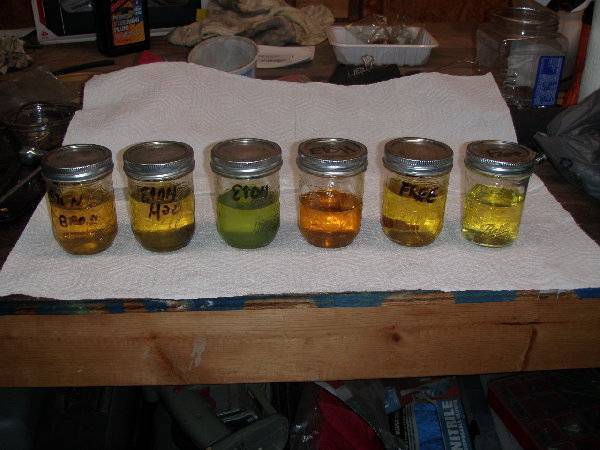|
Re: Bright green gas
|
||||
|---|---|---|---|---|
|
Home away from home

|
Whensoever 1930 or 2018, whether or not old or new gasoline or diesel, regardless of carburator or injection pump, regardless of whether two-stroke lawnmover or V8 or Soviet bulldozer, the color of a fuel turns into green when fuel lines or fuel jets or washers or floats etc. are covered with verdigris.
Copper or brass rust comes into being induced by condensed water. The intensity of green coloration depends on the size of brass/copper surface and the exposure time. Large cavities in fuel tanks (fill level) and long fuel lines as well as significant temperature differences support the creation of condensed water. To check the share of condensed water is daily routine in a conventional driven submarine and part of the procedure for preflight check of helicopters. The most common measurement method is checking the fuel turbidity value by help of flow photometers (real time in-line measurement).  I daresay that fuel stations use such tools too.
Posted on: 2018/12/12 4:53
|
|||
|
The story of ZIS-110, ZIS-115, ZIL-111 & Chaika GAZ-13 on www.guscha.de
|
||||
|
||||
|
Re: Bright green gas
|
||||
|---|---|---|---|---|
|
Home away from home
|
Nice experiment!
Hot copper will act as a catalyst and oxidize ethanol. Slower process at lower temps? chemdemos.uoregon.edu/demos/Le-Chateliers-Principle-Copper-Ion
Posted on: 2019/5/12 7:43
|
|||
|
||||
|
Re: Bright green gas
|
||||
|---|---|---|---|---|
|
Home away from home
|
Cu oxidation takes EtOH to acid ETOOH (acetic -aka vinegar) which typically is not colored. I suspect it's a CuO complex that's formed - maybe carbonyl origins - carboxylate. A UV/vis scan could tell. These cluster complexes absorb in the low end of the spectrum, 200-400 as well as the vis(green in this case). Dealt with many trying to decolorize stuff with low level metal contamination. I doubt it makes a difference to the combustion and it may clean up easily as no H2O.
Totally, not what my eyeballs expected but never is, that's why you do experiments.
Posted on: 2019/5/14 14:26
|
|||
|
||||

 (134.39 KB)
(134.39 KB)







